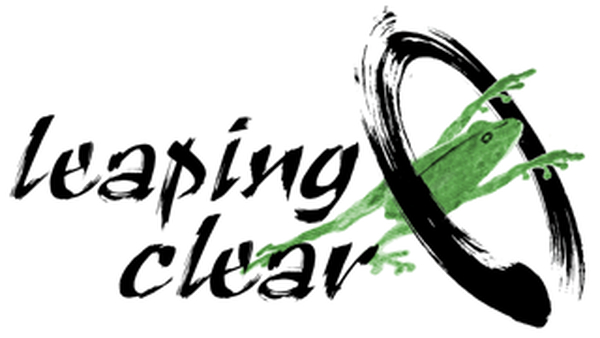Spring 2020 is one of the least rosy springs in memory. People worldwide are deeply concerned about the spread of the coronavirus, the loneliness of social isolation, and about economic hardship as we try to quell the rising numbers of contagion and deaths. Meanwhile, those of us in the U.S. are in the midst of a rancorous political contest and even unsure as to the outcome of the 2020 primary elections due to lockdowns and reduced voting numbers. In addition, there are many who personally face depression, other mental difficulties, or grief due to the loss of loved ones.
Because humans are social creatures, we’re all affected by these events and to some extent feel anxiety and fear. That is one facet of our evolutionary heritage. Another is that we respond to beauty in many forms. Beauty in the natural world around us—city street trees, balcony geraniums, parks, forests or beaches—and beauty in art.
This spring, we at Leaping Clear are especially grateful to the artists who’ve contributed such beautiful work to this issue. We hope you’ll find beauty to respond to in the many art forms here.
How do we as artists, writers, practitioners—and simply as human beings—meet the existential challenges of the moment? How do we find balance despite troubling conditions?
A cardinal practice of many contemplative disciplines is to turn toward difficulty rather than turn away. If we turn away, we are left with fear and doubt. If we turn toward, we are in that moment, fully aware.
Amy Sugeno’s essay “One Moment” demonstrates the beauty of this practice. Each moment of an oncoming thunderstorm is identified and met with wonder and clarity. Even when the focus turns toward inner storms, the awareness is there:
But we could not have known it would be eight more years before a child would come. And we could never have imagined how that would upend everything.
This moment is a painful moment.
This is the transformative alchemy of practicing with steady awareness or presence. As Dorian Rolston writes in his essay, “Fishing for Butterflies,” his meditation practice is to “see clearly.”
Stephen Fulder’s poem “The Goddess Within” references Shechina, the goddess of presence in the Kabbalah. When we are distracted, not present, the goddess is not present. Once we become aware, she returns:
But when we welcome the world
In an unconditional embrace
Suddenly she is there
And here, and everywhere.
The creative process itself embodies the practice of being with what is. When we write, paint, film, or perform music, if we are not present, the result may miss the mark, veer toward sentimentality, or lack depth.
One gets the sense when reading the poems of Christien Gholson and Madronna Holden that these poems had to be written in order to come to terms with the difficulties we face. Holden’s poem “Desert Fire Sermon” meets the subject of loneliness head on:
Wandering alone in the desert
brings you to a door
to open on yourself
where emptiness takes you
in her arms
There are many more artists and writers in this issue, who, with the steadiness of their practice, commit to being present with what is. Again, from Amy Sugeno’s essay:
One moment flows into the next, which flows into the next.
Moments of beauty and pain and wonder and heartache.
Each moment is simply a moment.
May all of us, wherever we are, find moments of balance and presence each day this spring and throughout the coming year.
Alyson Lie
Editor

